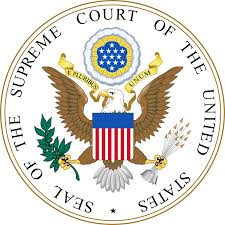
This post explains the application of the disclosure requirements as applied to treating physicians—the subject of by far the most reported opinions pertaining to disputes regarding the categorizing of expert witnesses. Depending on their role and the testimony they will offer, treating physicians can be deemed to be retained experts requiring a full expert report, non-retained experts requiring only a summary disclosure, or fact witnesses with no expert disclosure requirement. For a general description of the disclosures required for expert witnesses, please see the post titled “Expert Disclosures.”
If a party consults with a treating physician but does not intend to call the physician to testify as a witness, no Rule 26(a)(2) disclosure is required. Similarly, if a party intends to ask purely factual questions to the treating physician, the physician may be deemed a fact witness, not an expert witness, again outside the disclosure requirements in Rule 26(a)(2). For example, the question “Did you treat the plaintiff in your office on March 22?” is purely factual. So is, “Did you put a cast on the plaintiff’s arm?”
When the treating physician is going to offer expert opinions (rather than percipient factual testimony), the hard work begins. From a textual perspective, the distinction between experts who must disclose expert reports and those who may be disclosed by summary turns on the meaning of “retained,” which is the word that Rule 26(a)(2)(B) uses to describe experts who must disclose reports. The Rule, however, does not offer any guidance on what it means for an expert to be retained.
Merriam-Webster defined “retain” as, “to keep in one’s pay or service, specifically: to employ by paying a retainer.” The Cambridge Dictionary defines “retain” as, “to employ a lawyer, consultant (= someone paid to give expert advice or training), etc. by paying them before you need them.” Based on this small sample, the common usage of “retain” in this context turns on payment for services. However, the majority of courts reject this interpretation as sweeping too wide a swath (capturing all but the rare expert who agrees to testify for free).
Instead, the courts have developed a variety of different approaches to categorizing treating physicians who will testify at trial. In Cedant v. United States, 75 F.4th 1314 (11th Cir. 2023), the Eleventh Circuit held that the categorization of the expert depends on the nature of the witness, not the nature of the testimony. Under this approach, if the expert became involved in the underlying events and gained his or her knowledge through that participation, the expert’s involvement was not through retention. The subsequent decision of the legal team to ask the expert to testify and to pay the expert for his or her time does not convert that expert into a retained expert, and the plaintiff only need disclose a summary of the expert’s testimony, not a full report.
Conversely, in Johnson v. Friesen, 79 F.4th 939 (8th Cir. 2023), the Eighth Circuit held that the categorization of the expert depends on the nature of the testimony, not the nature of the witness. Under this approach, if the expert intends to offer opinions not formed as part of the expert’s underlying involvement (treatment of the plaintiff), the expert becomes a retained expert who must disclose a full report.
Finally, in Ali v. Connick, 2016 WL 3002403 (E.D.N.Y. 2016), the Eastern District of New York outlined a third approach, under which a treating physician may testify as a fact witness both to the facts about the treatment rendered to the plaintiff and any expert opinions formed in the course of that treatment. Under this approach, no expert disclosure is required for a treating physician to offer such fact and opinion testimony as long as the testimony does not include opinions formed for purposes of the litigation.
With these various approaches in mind, evaluating the status of a treating physician who will testify at trial and determining the appropriate disclosure, if any, entails a multitude of considerations. First, you must conduct jurisdiction-specific research to determine which approach the presiding court follows. Second, you must consider the circumstances of the physician’s involvement—did the legal team solicit the doctor’s involvement or did that involvement flow through the plaintiff or other treating physicians? Did that involvement begin before litigation had commenced or was planned, or did it arise early during the plaintiff’s treatment? Did the doctor primarily act as a treating physician or as a testifying expert? And finally, you must consider the nature of the testimony that the treating physician proposes to offer. Is it purely a description of the treatment rendered? Does it include opinions? If so, did the doctor form those opinions in the course of treating the plaintiff or in connection with the litigation? Did the doctor rely solely on the doctor’s personal observations of the plaintiff or did the doctor consult with other experts and consider information provided by counsel or others? All of these questions, and any other relevant circumstances, are potentially significant in handling treating physicians properly.
******
Steve is one of the authors of The Federal Litigator, a monthly publication from Thomson Reuters that reports on cases of general interest to those who practice in the federal courts. Most editions contain a “deep dive” into one issue, exploring four or five cases that tease out different nuances and applications of the doctrine under study. A portion of this article is an excerpt that is reprinted with the publisher’s permission from the August 2024 edition of The Federal Litigator (© 2024 Thomson Reuters). Further reproduction of any kind is strictly prohibited. For further information about this publication, please click here, or call 800.328.9352. Individual case summaries can be accessed through Westlaw. Steve is also one of the authors of the Federal Civil Rules Handbook, an annual publication from Thomson Reuters containing detailed, practical commentary providing a blueprint for the application of the Federal Rules of Civil Procedure and related jurisprudential concepts. To purchase the Handbook, please click here.


